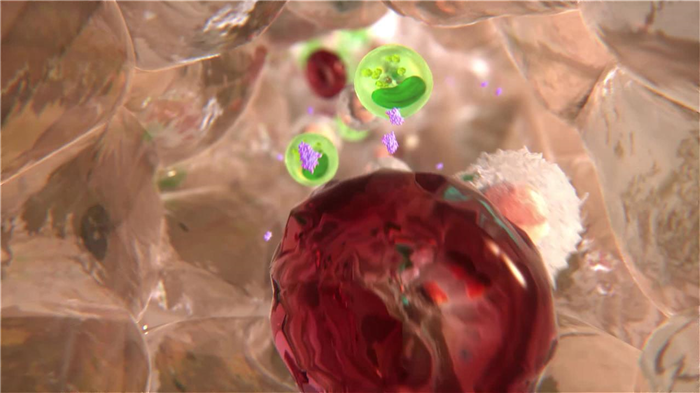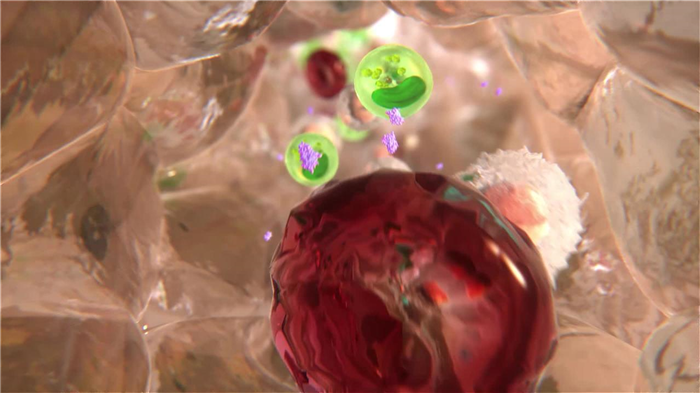Overview of the Pituitary Gland

The pituitary is a pea-sized gland that is housed within a bony structure (sella turcica) at the base of the brain. The sella turcica protects the pituitary but allows very little room for expansion.
The pituitary controls the function of most other endocrine glands and is therefore sometimes called the master gland. In turn, the pituitary is controlled in large part by the hypothalamus, a region of the brain that lies just above the pituitary. By detecting the levels of hormones produced by glands under the pituitary’s control (target glands), the hypothalamus or the pituitary can determine how much stimulation the target glands need.
The Pituitary and Its Target Organs
The lobes are connected to the hypothalamus by a stalk that contains blood vessels and nerve cell projections (nerve fibers, or axons). The hypothalamus controls the anterior lobe by releasing hormones through the connecting blood vessels. It controls the posterior lobe through nerve impulses.

The hormones produced by the pituitary are not all produced continuously. Most are released in bursts every 1 to 3 hours, with alternating periods of activity and inactivity. Some of the hormones, such as adrenocorticotropic hormone ( ACTH ), growth hormone, and prolactin, follow a circadian rhythm: The levels rise and fall predictably during the day, usually peaking just before awakening and dropping to their lowest levels just before sleep. The levels of other hormones vary according to other factors. For example, in women, the levels of luteinizing hormone and follicle-stimulating hormone, which control reproductive functions, vary during the menstrual cycle.
Pituitary: The Master Gland
The pituitary, a pea-sized gland at the base of the brain, produces a number of hormones. Each of these hormones affects a specific part of the body (a target organ or tissue). Because the pituitary controls the function of most other endocrine glands, it is often called the master gland.
* These hormones are produced in the hypothalamus but are stored in and released from the pituitary.
Anterior lobe hormones
The anterior lobe of the pituitary produces and releases (secretes) six main hormones:
Adrenocorticotropic hormone ( ACTH ), also called corticotropin , which stimulates the adrenal glands to produce cortisol and other hormones
Follicle-stimulating hormone and luteinizing hormone (the gonadotropins), which stimulate the testes to produce sperm, the ovaries to produce eggs, and the sex organs to produce sex hormones ( testosterone and estrogen )
Growth hormone, which regulates growth and physical development and has important effects on body shape by stimulating muscle formation and reducing fat tissue
The anterior lobe also produces several other hormones, including one that causes the skin to darken (beta-melanocyte–stimulating hormone) and ones that inhibit pain sensations (enkephalins and endorphins) and help control the immune system (endorphins).
Posterior lobe hormones
The posterior lobe of the pituitary produces only two hormones:
Oxytocin causes the uterus to contract during childbirth and immediately after delivery to prevent excessive bleeding. Oxytocin also stimulates contractions of the milk ducts in the breast, which move milk to the nipple (the let-down) in lactating women. Oxytocin has some additional roles in both men and women.
Pituitary gland malfunction
The pituitary gland can malfunction in several ways, usually as a result of developing a noncancerous tumor (adenoma). The tumor may overproduce one or more pituitary hormones, or the tumor may press on the normal pituitary cells, causing underproduction of one or more pituitary hormones.
The tumor may also cause enlargement of the pituitary gland Enlargement of the Pituitary Gland Enlargement of the pituitary gland is usually due to a tumor but may be due to bleeding into the gland or involvement by some other disease, such as tuberculosis or sarcoidosis. In some cases. read more , with or without disturbing hormone production. Sometimes there is overproduction of one hormone by a pituitary tumor and underproduction of another at the same time due to pressure.
Too little or too much of a pituitary hormone results in a wide variety of symptoms.
Overproduction of pituitary hormones causes disorders, including
Underproduction of pituitary hormones causes disorders, including
Doctors can measure the levels of pituitary hormones, usually by a simple blood test. Doctors select which pituitary hormone levels they want to measure depending on the person’s symptoms. Sometimes, levels of pituitary hormones are not easy to interpret because the levels vary greatly during the day and according to the body’s needs. For these hormones, measuring a random blood sample does not provide useful information.
For some of those hormones, doctors give a substance that would normally affect hormone production and then they measure the level of the hormone. For example, if a doctor injects insulin , the levels of ACTH , growth hormone, and prolactin should increase. Rather than measuring growth hormone levels directly, doctors often measure another hormone, insulin -like growth factor 1 (IGF-1). Growth hormone is produced in bursts and its levels quickly fall, but IGF-1 levels reflect the overall daily production of growth hormone. For all of these reasons, interpreting the results of blood tests for pituitary hormones is complex.